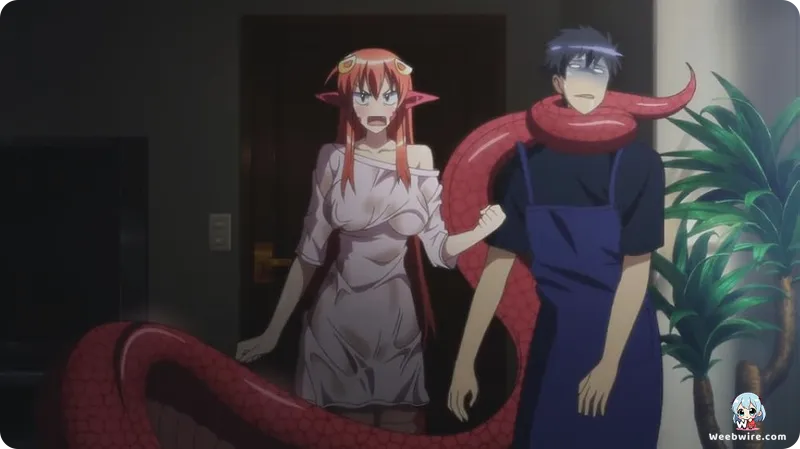Monster Musume's Secret History: Unpacking the Pseudo-Science and Dark Origins Behind the Beloved Ecchi Comedy

Since its breakout anime adaptation debuted in 2015, Monster Musume: Everyday Life With Monster Girls has secured its place in the fandom not just as a prominent entry in the ecchi harem genre, but also as a surprisingly robust example of fantastical world-building. Beyond the fan service and comedic scenarios, the enduring success of the series, animated by Studio Lerche, hinges on manga creator Okayado’s meticulous commitment to exploring the bizarre, often chaotic, realities of interspecies cohabitation. This dedication to pseudo-biology and practical constraints is arguably the most captivating element of the entire franchise.
The Shift from Horror to Slice-of-Life Comedy
A lesser-known fact about the genesis of Monster Musume involves a significant creative pivot. Before settling on the beloved lighthearted romantic comedy tone, Okayado originally contemplated a far more intense and dramatic storyline. Early concepts reportedly explored the genuine horror and existential tension that would accompany humans sharing close quarters with biologically dangerous entities.
However, recognizing the immense potential for humor in the domestic chaos that arises when human norms clash with monster physiology, the narrative direction shifted decisively toward the slice-of-life format. This change allowed the creator to focus on accidental, rather than malicious, conflict. Examples include Lamia Miia’s tendency to accidentally constrict her host, Kimihito, while sleeping, or Harpy Papi’s high avian metabolism resulting in hollow bones, a hyperactive nature, and notoriously short-term memory.

Meticulous Commitment to Monster Physiology
The level of detail applied to the monster girls' physiology often elevates the series above typical fantasy fare. Characters are not merely defined by aesthetic traits; their biology dictates their daily struggles. Miia’s massive serpentine tail, for instance, isn't just visual flair; the source material provides extensive diagrams detailing the muscle required for movement, the difficulty she faces in maintaining optimal body temperature, and her specialized dietary demands as a large constrictor.
Centorea the Centaur presents some of the most complex logistical issues, as her sheer size and weight distribution make navigating standard human dwellings or sitting in conventional furniture nearly impossible, constantly forcing her innate chivalry to contend with the limitations of her four-legged form in a human world.
Even secondary characters benefit from this scientific rigor. Arachne Rachnera’s ability to weave items is grounded in pseudo-science, with the manga detailing the industrial-grade tensile strength and composition of her silk. Similarly, the slime girl Suu’s behavior is explicitly tied to her hydration levels. Her size, shape, and personality shift based on liquid absorption, turning routine household tasks into a biological imperative for Kimihito.
Censorship and Physical Media Sales
Furthermore, the 2015 anime faced notable production challenges due to the explicit content. The TV broadcast was famously subject to heavy censorship, utilizing strategically placed steam, light beams, and sometimes humorous, surreal objects to obscure suggestive imagery. This stark contrast between the heavily sanitized broadcast and the completely uncensored home video release became a significant point of discussion, contributing to robust sales of the Blu-ray and DVD sets as fans clamored for the definitive, uninhibited version of the story. This serves as a fascinating case study in how perceived scarcity can drive physical media consumption in the anime market.
Credits
Monster Musume: Everyday Life With Monster Girls
Author
Okayado
Cover Art
Okayado
Studio
Lerche
Publisher
Tokuma Shoten
Producers





